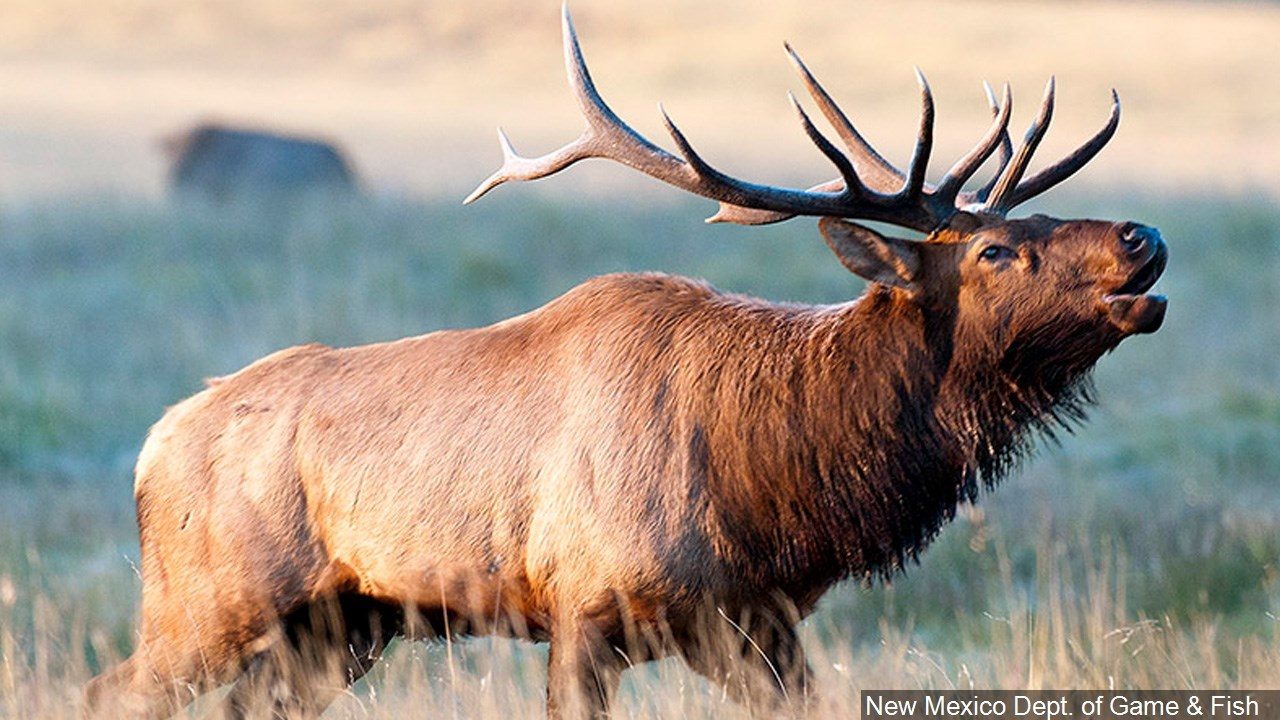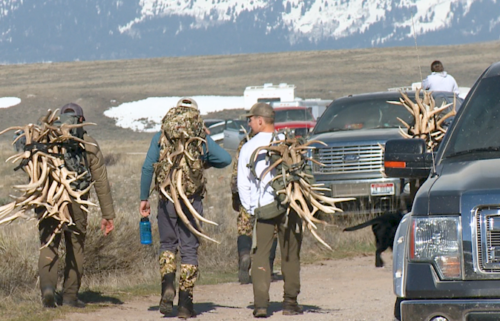Early season elk hunts are great options, but come with challenges

IDAHO FALLS, Idaho (KIFI) - Idaho’s early season antlerless elk hunts have started, and hunters are already heading outdoors to take advantage of what looks to be a great season. While these early hunts have some advantages, hunting during hot weather requires extra precaution and special care to prevent spoiling of meat.
“Always get permission, prepare accordingly and have a plan for the heat,” said Dennis Newman, Idaho Fish and Game wildlife manager based in Salmon.
The majority of early season elk hunting opportunities are antlerless hunts that occur on or within one mile of private agricultural land. These hunts are a tool that wildlife managers use to address chronic depredation problems. The goal is to control populations causing crop damage by harvesting or discouraging animals in specific areas.
Ask first and know before you go
Since the hunts occur on or near private land, hunters need to be aware of and follow Idaho’s trespass laws. Hunters must have written permission or other lawful form of permission to enter or remain on private land.
Hunters are encouraged to visit with landowners to obtain permission well in advance and always be sensitive to their concerns of fire, livestock, equipment and crops.
More information and a blank permission form are available on Page 2 of the 2022 Big Game Seasons and Rules brochure. Hunters should also know where they are in proximity to private land boundaries so they can stay within the rules of the hunt.
Before leaving home, hunters should also know how they plan to handle the meat should the hunt be successful. Knowing how to quickly get the animal out and where to take the meat are questions every early season hunter should ask themselves.
“With daytime temperatures reaching the 80-90’s, you don’t have time to look for friends to help or call around to multiple cold storage facilities,” says Newman. “Always know in advance who can help and where you can take the meat to cool and store it.”
Heat is the enemy
Heat is one of the biggest evils early season hunters face, and what to do with the meat after an animal is down. To prevent game meat from spoiling, hunters need to be prepared and act quickly to speed cooling.
“The key to preserving meat in warm weather is to begin the cooling process as quickly as possible,” says Newman. “Once the animal is tagged, it should be immediately dressed, skinned, reduced to quarters in most cases and quickly transported to cold storage.”
Getting the hide off quickly is imperative, as it acts as an insulator and will trap heat. Breaking the animal down into pieces will also help cooling. But keep in mind that the ground acts as a great insulator. Hanging the pieces, or at least elevating them off the ground, will allow air to circulate around them, cooling the meat more rapidly.
“The smaller the piece of meat, the faster it cools,” says Newman. “If you plan to leave the meat on the bone for ease of packing, cut slits into the meat to expose the bone and allow deeper cooling.”
Some early season hunters pack a lightweight tarp or cotton sheet to keep ground debris off the meat when skinning or cutting up the carcass in the field. Others who remove the meat from the bone, leave large ice chests at their vehicle for transport home.
“An elk quarter lying in the back of a truck in direct sunlight, even for just a couple hours, can start to spoil,” Newman said. “Extra coolers filled with ice will keep your meat both cool and clean.”
Remember the laws
Idaho hunters have an ethical and legal obligation to remove and properly care for the edible meat of big game animals they harvest, except black bears, mountain lions and gray wolves. This includes the meat of the front quarters as far down as the knee, hindquarters as far down as the hock and meat along the backbone which is the loin and tenderloin. It does not include meat of the head, internal organs, neck meat or meat covering the ribs or bones after close trimming.
If you’re going to put in all the time and effort to put meat in the freezer, why not take as much meat as possible? After all, taking home quality meat is one of the main reasons people hunt. Removing the neck meat and meat covering the ribs can be done in minutes, plus it makes for excellent hamburger, stew meat or sausage.
But when in a hurry cutting up a carcass in the field, hunters need to remember to keep evidence of sex or species attached to the animal while transporting it. This is so wildlife officials can accurately identify the animals in the hunter’s possession.
“No skinning job will be perfect, but it is critical that hunters retain evidence of sex on the carcass,” says Newman. “A quick review and following what’s listed on page 102 of the Big Game rules book will help hunters stay on the right side of the law.”
Fire concerns
While most of these hunts take place in an agricultural area, it's possible that fire restrictions or closures may affect portions of some hunt areas that fall within a mile of agricultural land. Hunters can stay abreast of current fire information by visiting Fish and Game's Fire information webpage, including a map of wildfire closures, and see more details about active fires in Idaho on the InciWeb incident information site.






